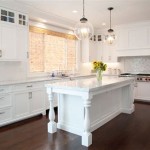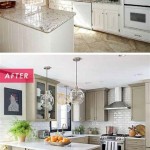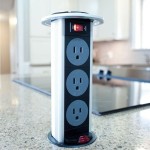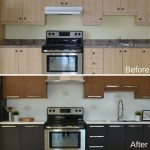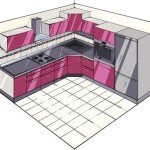Kitchen Faucet With Hot and Cold Handles: A Comprehensive Guide
Kitchen faucets equipped with separate hot and cold water handles represent a traditional and enduring design choice for residential and commercial kitchens. These faucets offer a distinct aesthetic and functional experience compared to single-handle models. Understanding the nuances of kitchen faucets with hot and cold handles, including their advantages, disadvantages, installation processes, and maintenance requirements, is essential for making informed purchasing decisions and ensuring long-term satisfaction.
This article aims to provide a detailed exploration of kitchen faucets with hot and cold handles, covering various aspects that contribute to their popularity and suitability for different kitchen environments. The information presented will assist homeowners, contractors, and designers in evaluating whether this type of faucet aligns with their specific needs and preferences.
Historical Context and Design Evolution
The concept of separate controls for hot and cold water predates the invention of the single-handle mixer faucet. Early plumbing systems often relied on distinct pipes for hot and cold water supply, necessitating individual valves to regulate each temperature. This historical precedent influenced the development of kitchen faucets with dedicated hot and cold handles. Over time, the design of these faucets has evolved, incorporating various styles, finishes, and materials while retaining the fundamental principle of separate temperature control.
Initially, basic lever or knob-style handles were standard. Modern designs encompass a wide range of options, including ornate cross handles, sleek minimalist levers, and ergonomically designed knobs. Finishes have also diversified, moving beyond simple chrome to encompass brushed nickel, oil-rubbed bronze, matte black, and polished brass, allowing for seamless integration with diverse kitchen aesthetics. The internal mechanisms have also improved, utilizing ceramic disc cartridges for enhanced durability and leak resistance compared to older compression valve systems.
Material selection plays a crucial role in the overall lifespan and performance of the faucet. Brass remains a popular choice for the faucet body due to its corrosion resistance and durability. Stainless steel is another common option, particularly for its sleek appearance and hygienic properties. Plastic components are often used for internal parts, such as cartridges and aerators, offering cost-effectiveness and resistance to scaling.
Advantages of Kitchen Faucets With Hot and Cold Handles
Kitchen faucets with separate hot and cold handles offer several distinct advantages that contribute to their continued relevance in modern kitchens. These advantages often appeal to individuals who value traditional design, precise temperature control, and relative ease of maintenance.
One primary advantage is the precise control over water temperature. Unlike single-handle faucets, which require finding the right balance between hot and cold water, separate handles allow users to adjust each temperature independently. This is particularly beneficial for tasks requiring specific water temperatures, such as washing delicate items or preparing baby formula. Users can easily fine-tune the temperature to their desired level without the trial-and-error often associated with single-handle models.
Another benefit is the potential for enhanced safety, especially in households with young children or elderly individuals. By limiting the maximum hot water temperature, users can prevent accidental scalding. Separate handles make it less likely for children to inadvertently turn on scalding hot water. Installation of a temperature-limiting valve in the hot water supply line can further enhance safety.
Furthermore, many users appreciate the traditional aesthetic of kitchen faucets with separate handles. The symmetrical design and classic styling often complement traditional or vintage-inspired kitchen designs. The availability of diverse handle styles and finishes allows homeowners to personalize their faucets to match their overall kitchen decor.
Maintenance can also be simpler in some cases. With separate handles, repairing a leak or replacing a worn-out cartridge often involves isolating only the hot or cold side of the faucet, minimizing disruption and cost. Individual components are typically readily available and relatively easy to replace, contributing to the long-term serviceability of the faucet.
Disadvantages and Considerations
Despite their advantages, kitchen faucets with distinct hot and cold handles also present certain drawbacks that should be considered during the selection process. These disadvantages relate primarily to ease of use, water efficiency, and installation complexity.
One potential drawback is the need to use both hands to achieve a desired water temperature and flow rate. This can be less convenient compared to single-handle faucets, which allow for one-handed operation. For individuals with limited mobility or those frequently using their hands for other tasks while at the sink, a single-handle faucet may be a more practical choice.
Water wastage can also be a concern. Users may inadvertently run water while adjusting the temperature, leading to unnecessary water consumption. This is particularly true if the faucet is not equipped with a low-flow aerator. While modern models often incorporate water-saving features, it's essential to be mindful of water usage and avoid letting the water run unnecessarily.
Installation can sometimes be more complex compared to single-handle faucets. Separate water supply lines are required for each handle, potentially necessitating additional plumbing work. Older homes may not have the necessary plumbing configuration, requiring modifications to accommodate a faucet with separate handles. This can increase the overall cost and complexity of the installation process.
The aesthetic may not appeal to everyone. The traditional look might not align with contemporary or minimalist kitchen designs. While modern interpretations exist, the inherent design of separate handles can sometimes appear dated compared to the sleek lines of single-handle models.
Installation Procedures and Plumbing Requirements
The installation of kitchen faucets with hot and cold handles typically involves several steps, requiring basic plumbing skills and tools. It is crucial to follow the manufacturer's instructions carefully to ensure proper installation and prevent leaks.
Before commencing the installation, the water supply to the existing faucet should be shut off. This can usually be done by turning off the shut-off valves located beneath the sink. If shut-off valves are not present, the main water supply to the house may need to be turned off. Disconnecting the existing faucet involves loosening the supply lines and removing the mounting hardware.
The new faucet is then installed by placing the faucet body through the sink holes, aligning the handles with the appropriate hot and cold water markings. Mounting hardware, such as washers and nuts, is used to secure the faucet body to the sink. The supply lines are then connected to the corresponding hot and cold water shut-off valves, ensuring a tight and leak-proof connection. Teflon tape or pipe sealant can be used to enhance the seal.
Proper plumbing configuration is essential for a successful installation. The distance between the hot and cold water supply lines should match the spacing of the faucet connections. If necessary, flexible supply lines can be used to bridge the gap. In some cases, plumbing modifications may be required to accommodate the faucet.
After completing the installation, the water supply should be turned back on gradually, checking for any leaks around the faucet body and supply line connections. If leaks are detected, the connections should be tightened or re-sealed. It is also important to flush the faucet to remove any debris or air from the water lines.
Maintenance and Repair
Regular maintenance can extend the lifespan of a kitchen faucet and prevent costly repairs. Simple tasks, such as cleaning the faucet surface and checking for leaks, can help maintain its performance and appearance.
Cleaning the faucet regularly with a mild soap and water solution can prevent the buildup of mineral deposits and grime. Harsh chemicals or abrasive cleaners should be avoided, as they can damage the faucet finish. A soft cloth or sponge should be used to wipe the faucet clean. Hard water stains can be removed with a solution of vinegar and water.
Leaks are a common issue with kitchen faucets. If a leak is detected, the source should be identified and addressed promptly. Leaks around the faucet handle often indicate a worn-out cartridge or O-ring. Replacing the cartridge or O-ring can usually resolve the leak. Leaks around the faucet body may indicate a loose connection or damaged gasket. Tightening the connection or replacing the gasket can often fix the issue.
Mineral buildup can also affect the performance of the faucet. Over time, mineral deposits can accumulate in the aerator, reducing water flow. The aerator can be removed and cleaned with a solution of vinegar and water to remove mineral deposits. In some cases, the aerator may need to be replaced.
When performing repairs, it is essential to shut off the water supply to the faucet before disassembling any components. This will prevent water from flooding the area. It is also important to use the correct tools and replacement parts to avoid damaging the faucet. If unsure about performing a repair, it is best to consult a qualified plumber.
Materials, Finishes and Styles
The materials, finishes, and styles available for kitchen faucets with hot and cold handles are diverse, allowing for extensive customization to complement any kitchen design. Understanding these options is crucial for selecting a faucet that not only functions well but also enhances the aesthetic appeal of the kitchen.
The most common materials used for the faucet body include brass, stainless steel, and occasionally, zinc alloys. Brass is valued for its durability and resistance to corrosion. Stainless steel offers a sleek, modern look and is also resistant to corrosion. Zinc alloys are often used for less expensive models.
Finishes range from traditional chrome to modern brushed nickel, oil-rubbed bronze, and matte black. Chrome is a classic choice that is easy to clean and maintain. Brushed nickel provides a softer, warmer look compared to chrome. Oil-rubbed bronze offers a rustic, antique appearance. Matte black is a contemporary choice that adds a touch of drama to the kitchen.
Handle styles vary widely, from traditional cross handles to sleek lever handles and ergonomic knob handles. Cross handles offer a vintage aesthetic and are easy to grip. Lever handles provide a more modern look and are easy to operate with one hand. Knob handles offer a classic, timeless appeal.
Faucet styles can range from traditional bridge faucets to modern gooseneck faucets. Bridge faucets feature a horizontal bar connecting the hot and cold water handles. Gooseneck faucets have a curved spout that provides ample clearance for filling tall pots and pans. The choice of style depends on the individual's aesthetic preferences and functional requirements.
Ultimately, selecting the right kitchen faucet with hot and cold handles involves careful consideration of factors such as design preferences, budget constraints, and water efficiency goals. While maintaining the traditional function of separate hot and cold water supplies, modern models offer a wide range of stylistic and functional enhancements to suit diverse kitchen environments.

G1 2 Modern 3 In 1 Filter Purifier Kitchen Faucet Double Handle Pull Out Sink Hot Cold Water Tap Lazada Singapore

Brass Dual Handles Hot Cold Water Kitchen Tap With Cartridge Two Handle Faucets Chromed Mixer Faucet Sink Made In Com

Hot Cold Water Faucet With Contemporary Round Body Lever Handles 90 Spout Mountain Plumbing Products

Brass Dual Handles Hot Cold Water Kitchen Tap With Cartridge Two Handle Faucets Chromed Mixer Faucet Sink Made In Com

Yoogyy Wall Mount Commercial Kitchen Faucet Dual Handle Hot Cold Solid Brass Ebay

Brass Dual Handles Hot Cold Water Kitchen Tap With Cartridge Two Handle Faucets Chromed Mixer Faucet Sink Made In Com

Double Hot Cold Faucet Motor Home Handles Rv Holes Kitchen Mobile Ebay

Hot Cold Water Faucet With Contemporary Round Body Handles 90 Spout Mountain Plumbing Products

Kitchen Tap Dual Twin Lever Modern Mono Sink Mixer Hot Cold Faucet Pull Out Spout Brushed Nickel Finish

Chrome Black Kitchen Faucet Dual Handles Hot Cold Water Mixer Tap Wall Mounted Swivel Spout Spring Pull Down Faucets
See Also

